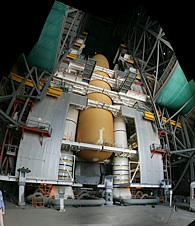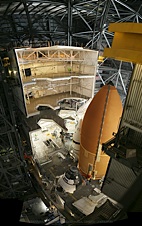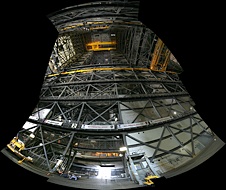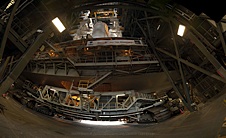If You Can't Get Enough
What stitches is he talking about, you may ask? No, I didn't need any stitches. By stitches I mean multi-panel images. Commonly they are referred to as Panoramics, but usually a panoramic image means a "noodle" shaped image - something that's far wider than tall; images showing a 180 or even 360 degree view around a certain spot, but only in a narrow angle around the horizon. General stitches are pictures that are usually composed of smaller frames in both dimensions, mainly to enhance the final resolution, or to cover a wider angle than would be possible with even the widest lenses. This is something I got inspired to doing by my friend Steven Noyes who does it all the time, with some unlikely subjects. This 2D stitching is a little bit harder to do, but with ever better software and faster computers we are at a point where it's quite easy to get a good 2D stitch, as long as you pay a bit attention when shooting. This doesn't mean that I always do - often I forget the most basic rule of stitching: manual exposure. Once your exposure drifts, you are in for some work.
It used to be required that in order to get a good stitch - 1D or 2D - you had to use sophisticated pano heads etc. - basically you had to lug around a lot of equipment that was hard to set up and use. With new generation of software that works much like fingerprint analysis rather than the old style that tried to match seams, it's less important to have perfect alignment. It still helps, but it's less critical. For instance, my panoramics from our 2004 Antarctica trip were all shot from a moving boat; paying attention to the nodal point of a lens (and to other things that are often thrown into a conversation by people who want to sound cool) was simply impossible. My old friend Rupert tried to teach me all the tricks before the trip, but let's say I was somewhat dense and not really patient for this kind of stuff - not that it would have mattered much, anyway. When I tried to stitch these panoramics using the then state of the art software, I was literally in for a headache: manual retouching and fixing of seams that went for days caused me a severe headache (it's hard to look at an image that looks like double vision).
Only two years later, software has greatly advanced. When I first stumbled upon Autopano Pro it was available only as a PC version, so I launched Virtual PC and threw all 32 Antarctica panoramics at it. It solved 30 of them without any manual intervention in such a way that they looked far better than anything I have ever created in 2004, even after retouching. Even though Autopano has a user interface that lacks polish, it is amazingly powerful and since the 1.3 release it's also blazingly fast. It may have some rough edges here and there, but if you're pragmatic and all that counts is the final output, or even ease of use, you should definitely try this application!
As of May 2006, APP (as it's commonly referred to) didn't work all too well with P45 images, some of which are shown below. I didn't re-stitch the pictures since, which now would be possible with better results. Even so, I am sure the results speak for themselves.
Click on the first image
to start a slide show for this chapter (11 pictures)
Images shown below are a selection.
In slide show, click on image to return to index.
 |
 |
 |
 |
 |
 |